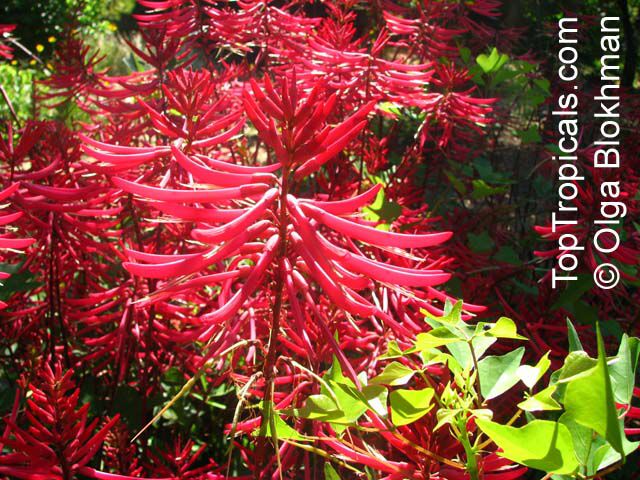Coral bean - Hummingbird Delight
by Onika Amell, tropical plant expert
About the Author
Onika Amell was born in farmer's family in Cape Town, South Africa, and always had a keen interest in gardening. She has been a globe-trotter for many years, traveling along with her husband, an engineer, and her life is worth a novel. In Cape Town she worked in groups "Soil for Life and Work for Love", teaching people how to grow their own food, improve their health, and protect the environment. Onika lived in Galilee, Israel, skydiving over 500 jumps and working on the fields planting, harvesting and caring for various crops (Lychee, Avocado, Bananas, etc), helping out in community gardens... In SE Asia, she taught English at business centers... Upon finally settling in SW Florida, she joined the ECHO Global Farms project on teaching farmers/families around the world about effective crop production... Now as a part of Top Tropicals Team, Onika is our plant expert and a columnist. Onika's biggest passions are plants and... of course – cats, who are her children! She has six of them: Itembi, Freddie Mercury, Donald Trump (he is the difficult one), Tigerlilly, Sweetie, and Jaxson.
Coral bean – Hummingbird Delight
Q: I am creating a natural, native garden on the southwest coast of Florida. In some of the far corners of my landscape, my soil unfortunately is poor and my irrigation does not reach these areas. I am hoping to find something unusual and native to grow in these challenging areas of my garden. Any luck of finding something tough that will also attract hummingbirds and/or butterflies?
A: Most of us have these areas in our gardens where the soil is sandy or where irrigation simply does not reach. It is always wise to choose tough, native plants that will grow in these areas with minimum care, fertilizer or the luxury of being watered regularly.
One plant to consider is the Coral bean or Erythrina herbacea. This legume, native to the southern portions of the United States, is Florida-friendly, unusual and a great choice for natural and informal planting. It will add interest to these challenging area(s) of your landscape from spring to fall.
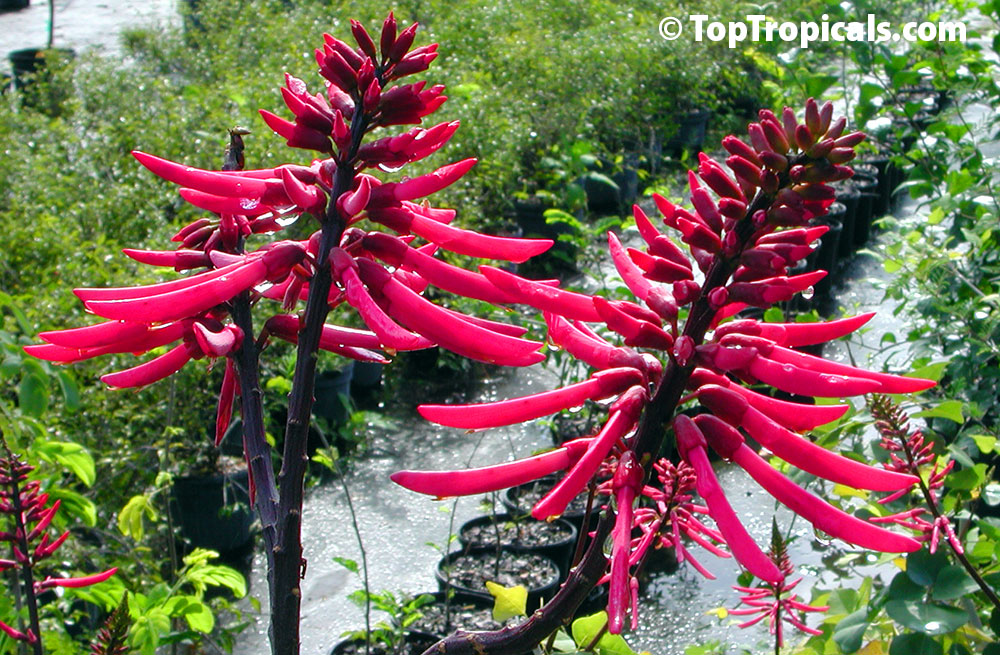
Beautiful and bright spikes of red tubular flowers start showing off on the upper part of tall stalks during spring, luring in hummingbirds and butterflies. This is followed by showy legume pods holding several bright red beans, which stay in place for several months.
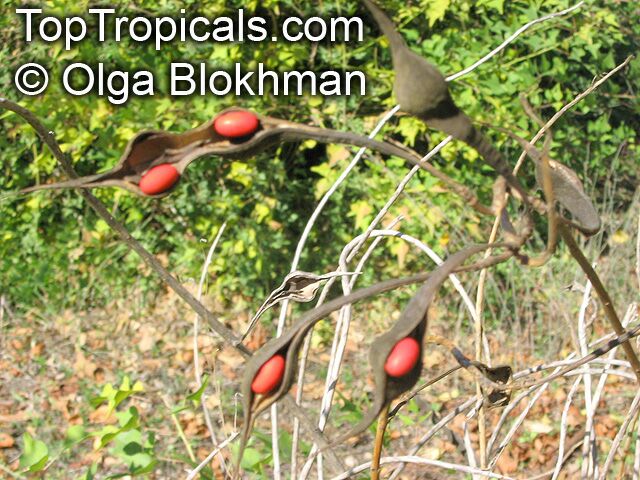
Not only are the flowers and the seeds attractive, but the leaves are interesting as well. Bright green and uniquely shaped, the leaves always turn towards the sun!
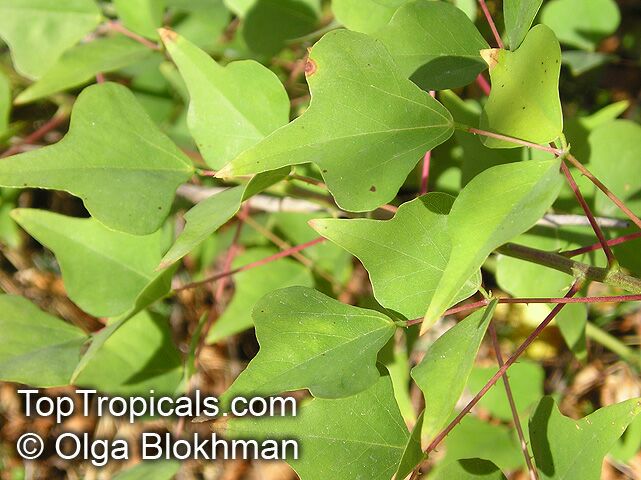
Although the plant enjoys rich and organic soil, it will do just fine in sandy soil providing it is well-drained. It will flower best in full sun or partial shade. Young plants will naturally require regular water, but once established, coral bean actually does better with infrequent watering.
It is also salt-tolerate, so it will live happily on the coast!
Coral bean can grow to about 20 feet tall if you live in a frost-free area. In places where cold weather kills it back, it seldom grows taller than 8 feet. Cut back dead tops in the winter.
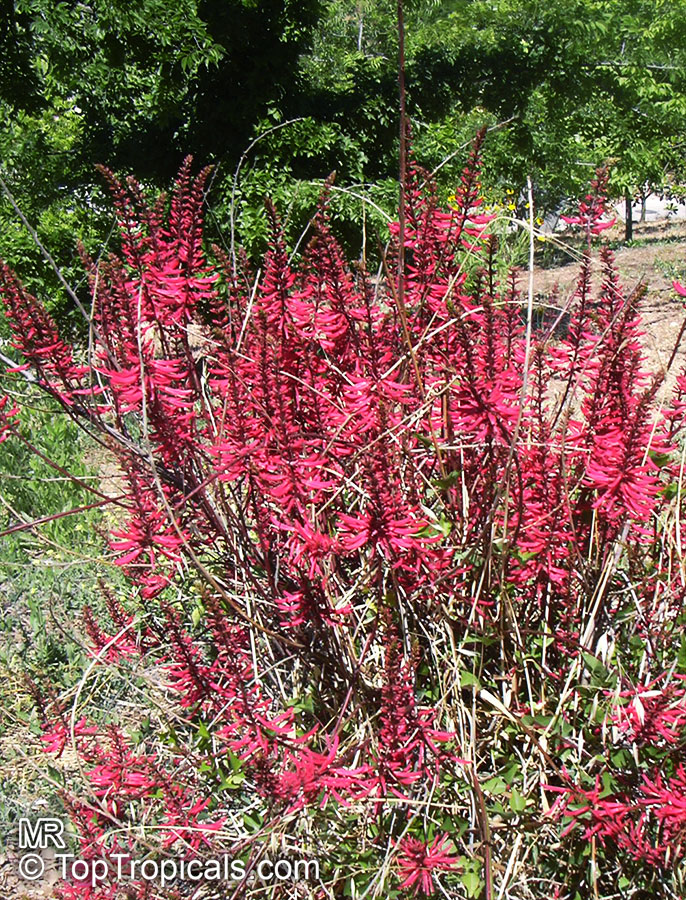
If you want more vigorous growth, fertilize one or twice a year with:
SUNSHINE Megaflor - Bloom Nutrition Booster
Tropical Allure - Smart-Release Booster
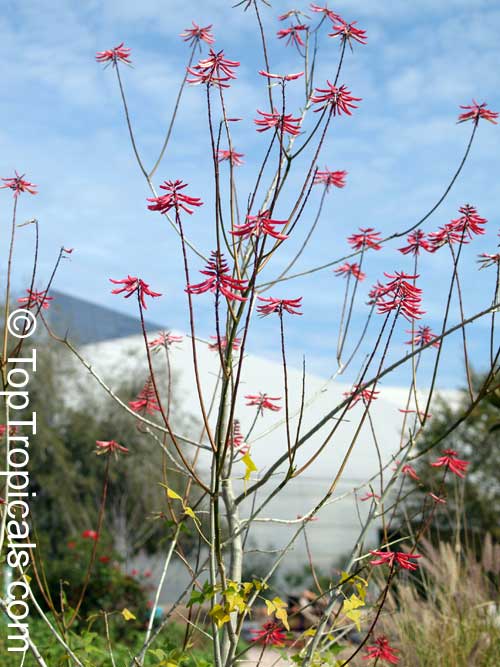
Drawbacks? The underside of each leaf is prickly and the seeds are toxic... so don't try to eat them please! On a bright side, young leaves and flowers may be cooked and safely eaten.
However, Coral bean can make an interesting and beautiful addition to a native, naturalistic landscape, especially in difficult areas. They will survive effortlessly. An added bonus is that hummingbirds simply love the beautiful scarlet–red flowers of this plant. In fact, Coral bean flowers are tailor-made for hummer tongues and they simply cannot stay away!
Erythrina herbacea is also known as Coral tree, Coral bean, Cardinal-spear or Cherokee-bean.
